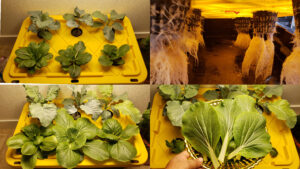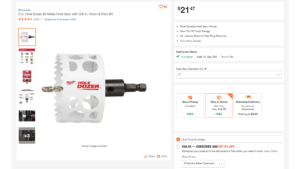Have you ever wondered if it’s possible to grow plants without soil? In today’s video, we’ll take a deep dive into the fascinating world of hydroponics and explore the Kratky hydroponic system to see if it really works. Developed by Bernard Kratky at the University of Hawaii, this simple yet effective method allows you to cultivate plants using only water and nutrients, no soil required! Let’s get ready to set up our own Kratky system and discover its potential for hassle-free, soilless gardening.
Hydroponic Systems Demystified:
Before we jump into the practical aspects, let’s take a moment to understand hydroponic systems better. There are two primary types: active systems, such as deep water culture, which involves using air stones and pumps to circulate water and nutrients, and passive systems like the Kratky method. The Kratky system stands out for its elegance and simplicity, as it requires minimal components compared to its active counterpart. Unlike active systems, which demand constant monitoring and maintenance, the Kratky method allows you to set it and forget it, making it an attractive option for beginners and busy gardeners alike.

Comparison 1

Comparison 2
What You’ll Need:
To set up your very own Kratky hydroponic system, you’ll need a few essential components. The heart of the system is a 27-gallon storage tote, readily available at stores like Costco or Home Depot. Additionally, you’ll need a three-inch hole saw to create the openings for the net cups, which are essential for holding the plants. Fortunately, these net cups are easily obtainable on platforms like Amazon. To support the plants in the net cups, you’ll require pumice or a suitable clay aggregate. As for nutrients, the master blend mix, calcium nitrate, and epsom salt will be your trusted allies in nourishing the plants throughout their growth journey.
Setting Up the System:
Now, let’s walk through the process of assembling your Kratky hydroponic system. Start by measuring and marking the areas where the net cups will be placed in the tote. Ensuring equal spacing between the cups will promote uniform growth for your plants. Using the three-inch hole saw, carefully create the openings, working from front to back for a clean cut. Once the holes are ready, remove any small plastic pieces at the edges for a neat finish. With the tote prepared, it’s time to add water and nutrients to create the ideal growing environment for your plants. Fill the tote with approximately 25 gallons of water, ensuring that the water level reaches halfway up the net pots. This balance is crucial, as plants in the Kratky system develop both water roots submerged in the solution and air roots above the waterline. Now, let’s mix in the nutrients one by one: start with the master blend mix, followed by the epsom salt, and finally, the calcium nitrate. Remember to mix each nutrient separately to avoid undesirable reactions between them. This careful approach ensures that your nutrient solution remains balanced and effective for plant growth.
Planting Process:
With your Kratky system set up and the nutrient solution ready, it’s time to introduce the stars of the show: your chosen plants. The beauty of the Kratky method is that you can use either hydroponically germinated seedlings or soil-grown seedlings from your local nurseries. For this demonstration, we’ll be planting bok choy and cauliflower seedlings. Carefully place the seedlings into the net cups, making sure they are adequately supported by pumice or any other preferred material. Once all the plants are comfortably nestled in their net pots, your work is done! The Kratky system will take care of the rest, providing your plants with the nutrients they need to flourish throughout their entire life cycle.

Planted
Harvesting and Results:
After a few weeks of nurturing your plants, it’s time to reap the rewards of your Kratky hydroponic efforts. As you can see, the bok choy leaves are vibrant and free from any pests or diseases, thanks to the nutrient-rich solution that fosters healthy growth. The taste of the bok choy is exceptional, and you can enjoy the satisfaction of knowing that you’ve grown it using an innovative soilless technique. What’s even more impressive is that the bok choy plant regenerates quickly after harvesting, ensuring a continuous supply of fresh, nutritious greens.

Kratky Collage
Having experienced the remarkable results of the Kratky hydroponic system, it’s evident that this method works exceptionally well for leafy greens, herbs, and lettuces. While it may not be the optimal choice for growing larger vegetables, the Kratky system’s simplicity and effectiveness make it a perfect fit for beginners venturing into hydroponics. Furthermore, the space-saving aspect of the Kratky method allows you to set up multiple systems without the need for stacking, making it ideal for those with limited garden space.
So why not embark on this exciting journey of Kratky hydroponics? Set up your system, plant your favorite greens, and watch them thrive in the nourishing waters of this innovative method. We hope you enjoyed this exploration of Kratky hydroponics. Feel free to share your questions, comments, or experiences with hydroponics in the comments section below. Happy gardening!





0 Comments